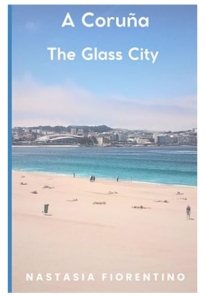Spain is a country with an incredible landscape and geographical diversity.
From the highest peaks: the Teide (3718 m) on the island of Tenerife, the Mulhacén (3478 m) in Granada and the Aneto (3404 m) in the Pyrenees; to different climatic systems from north to south; to different oceans and seas that wash its shores. Discovering the peculiarities of each Autonomous Communities is an exciting human experience in a country where coexist different peoples and cultures.
The Autonomous Communities of Spain are:
- Andalusia: it was inhabited by Phoenicians, Carthaginians, Greeks, Romans and Arabs who left traces of their passage on the territory, and it is the home of some famous artists all over the world, such as: Velázquez, Murillo and Picasso. Read more here about Andalusia and the cities of Andalusia to visit.
- Aragon: in the region there are fantastic places to stay in contact with nature, breathe pure air and practice sports of all kinds. To find out more about Aragon read here.
- Asturias (Principality of): The Principality of Asturias is a mountainous and coastal community that has numerous natural enclaves, some protected and recognized by UNESCO, such as biosphere reserves. Read more about Asturias here.
- Basque Country: in the region there are some places of interest for lovers of food and wine, traditional festivals also known internationally and excellent gastronomy. Read more about the Basque Country here.
- Balearic Islands: there are protected natural areas, wonderful beaches, art, traditional festivals and good gastronomy. Read more about the Balearic Islands here.
- Canary Islands: there are eight islands with a cultural identity that has undergone various influences. One of the characteristic features of the Canary Islands is the subtropical climate with mild temperatures throughout the year, which favors the diversity of vegetation and continuous seaside tourism. Read more about the Canary Islands here.
- Cantabria: in the region there are interesting and important historical monuments in the form of caves, civil and religious buildings, and museums. Read more about the Autonomous Community of Cantabria here or read more about the Cities of Cantabria to visit.
- Castile and León: more than half of all of Spain’s cultural heritage is found in the region, including World Heritage properties, museums, castles, cathedrals and Romanesque art. Furthermore, a large part of the Way of the Castilian language passes through the region and other itineraries of great cultural interest. Read more about the Community of Castile and León here.
- Castile-La Mancha: in the Autonomous Community there are cities declared World Heritage Sites by UNESCO (Toledo, Cuenca and Almadén), and the Way of the mills of La Mancha or of the mills of Don Quixote. Read more about Castile La Mancha here.
- Catalonia: The Costa Brava is a part of the coastal area of Catalonia very popular with tourists for its beautiful beaches. Read more about Catalonia here, or read about the Catalonian Cities to visit.
- Community of Madrid: in the region of the capital of Spain, Madrid, there are World Heritage properties such as the Monastery and Real Sitio de San Lorenzo de El Escorial; the University and the historic center of Alcalá de Henares, birthplace of Miguel de Cervantes, and the cultural landscape of Aranjuez. To find out more about the Community of Madrid read here.
- Extremadura: it has UNESCO World Heritage sites such as the Old Town of Cáceres, the Archaeological Complex of Mérida, and the Monastery of Our Lady of Guadalupe, beautiful cities rich in history and ancient paths such as Via de la Plata and Ruta del Emperador Carlos V. Read more about Extremadura here.
- Galicia: it is a wooded region crossed by rivers and bathed by the sea in the north, which has a significant historical and cultural heritage also known internationally. Read more about Galicia here, or read about the cities of Galicia to visit.
- La Rioja: it is a region famous for its wines with designation of origin. Read more about La Rioja here.
- Navarre: it has an extensive network of protected natural areas; medieval castles; museums of all kinds and excellent gastronomy. Read more about Navarre here.
- Region of Murcia: along the Murcia coast, called Costa Cálida, there are large white sand beaches with transparent waters and others smaller, with coves and rocky cliffs, and the largest natural lagoon in the country, the Albufera del Mar Menor. Read more about the Region of Murcia here, or read the Cities of the Region of Murcia to visit.
- Valencian Community: it has more than 500 km of coastline, Mediterranean climate, biodiversity of parks, nature reserves, paths for those wishing to go trekking or cycling, and internationally famous folk festivals. Read more about the Valencian Community here or read the Cities of the Valencian Community to visit.
And two autonomous cities: Ceuta and Melilla.
For historical, cultural and language reasons, the Basque Country, Catalonia, Galicia and Andalusia, has always claimed independence. The Constitution of 1978 recognized this right and decreed the 17 Autonomous Communities.



